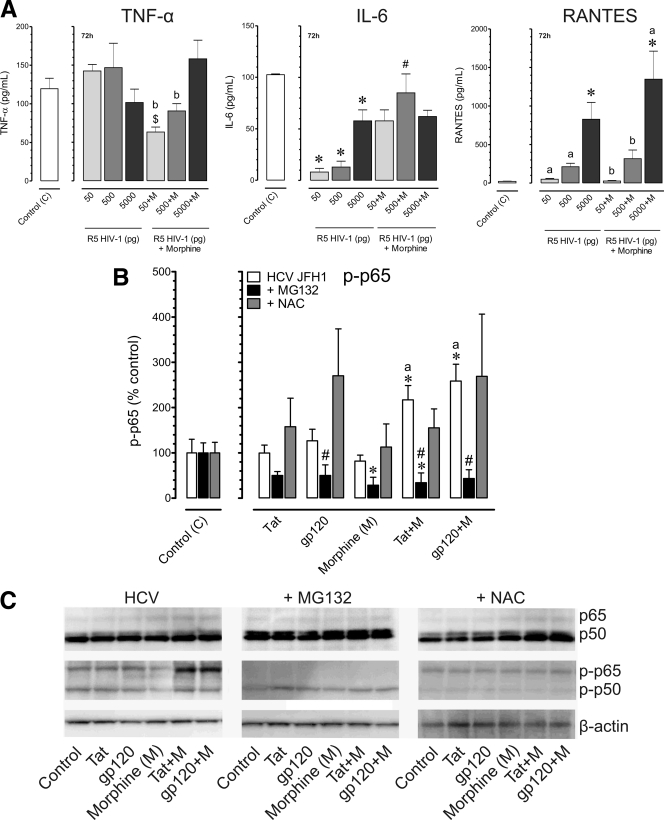Fig. 6.
Effects of inhibiting proteasome function or a ROS scavenger on the inflammatory response to HCV and HIV-1 coinfection with or without morphine. HCV (JFH1)-infected Huh7.5.1 cells were pretreated with MG132 (10 μM) or the ROS scavenger N-acetyl cysteine (NAC) (10 μM), followed by incubation with HIV-1 Tat (100 nM) or bitropic gp120MN (500 pM) with or without morphine (M) (500 nM) and assessed at 8 h following treatment. (A) HCV-infected Huh7.5.1 cells were inoculated with R5-tropic HIV-1SF162 at concentrations of 50,500, or 5,000 pg/ml alone and in combination with morphine (500 nM) for 72 h. Values represent mean cytokine levels ± SEM of three independent experiments (*, P < 0.05 versus control; $, P < 0.05 versus HIV-1 50 pg; #, P < 0.05 versus HIV-1 500 pg; a, P < 0.05 versus HIV-1 5000 pg; b, P < 0.05 versus HIV-1 with 5,000 pg of morphine). (B) Phosphorylation of the p65 (P∼p65) subunit of NF-κB was monitored by Western blot analysis, normalized to total p65, and compared to untreated HCV JFH1-infected cells. Values are the mean ± SEM from three independent experiments (*, P < 0.05 versus untreated, HCV-infected controls; a, P < 0.05 versus HIV-1 protein alone; #, P < 0.05 versus HCV-infected group without inhibitor). (C) Combined HIV-1 proteins with morphine increase P∼p65 levels while neither HIV-1 proteins nor morphine alone affects p65 phosphorylation. MG132 dramatically attenuated P∼p65 while NAC caused a relative decline in p50 levels in Western immunoblots of p50 and p65 and their phosphorylated counterparts, P∼p50 and P∼p65, respectively.

